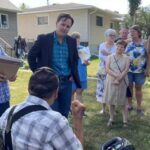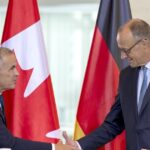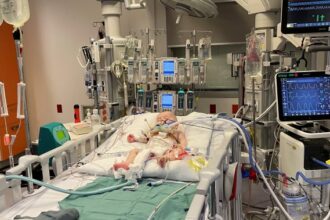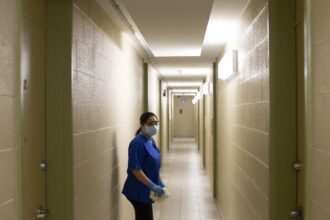In a significant development for rural healthcare in Canada’s north, the Northern Alberta Rural Medical Training Program officially welcomed its inaugural class of medical students this week, marking a pivotal moment in addressing the persistent physician shortage plaguing remote communities. The initiative, years in the making, represents a collaborative effort between provincial health authorities, medical institutions, and rural municipalities to cultivate homegrown medical talent that understands the unique challenges of practicing in isolated settings.
“This program isn’t just about training more doctors—it’s about training the right doctors for the right communities,” explained Dr. Melanie Harwood, the program’s founding director, during the launch ceremony in Grande Prairie. “Students who train in rural environments are significantly more likely to practice in similar settings after graduation, creating a sustainable solution to our ongoing healthcare staffing challenges.”
The pioneering cohort consists of 15 students, all of whom have existing ties to northern communities. Unlike traditional medical education models that concentrate training in urban centers, these students will complete the majority of their clinical rotations in smaller communities throughout the Peace Country region, including High Level, Peace River, and Fort McMurray.
Research from the Canadian Journal of Rural Medicine indicates that exposure to rural practice during formative medical training increases the likelihood of physicians choosing to establish long-term practices in underserved areas by nearly 40%. This statistic underscores the strategic importance of training healthcare providers in the environments where they are most needed.
“I grew up watching my community struggle with healthcare access,” shared Alyssa Vermeulen, one of the program’s first students. “My grandfather had to travel four hours for specialized care that should have been available locally. That experience shaped my decision to pursue medicine and, specifically, this program.”
The initiative comes at a critical time for northern healthcare delivery. According to Alberta Health Services data, rural communities in the province’s north face physician vacancy rates exceeding 30% in some locations, with specialist coverage even more precarious. The shortage has forced many residents to travel hundreds of kilometers for routine care, creating both financial hardships and dangerous delays in treatment.
Provincial investment in the program totals $45 million over five years, covering infrastructure improvements at regional hospitals, specialized teaching equipment, and accommodation subsidies for students during their rural rotations. The funding package also includes incentives for established physicians who commit to teaching roles.
“We’re tackling this challenge from multiple angles,” noted Alberta’s Minister of Health during a press briefing on healthcare policy. “Training rural physicians is just one component of our comprehensive rural health strategy, but it’s perhaps the most sustainable long-term solution we’ve implemented.”
Program administrators have incorporated several innovative elements designed specifically for the rural context, including wilderness medicine training, cultural competency courses focused on Indigenous health perspectives, and telemedicine proficiency. Students will also receive specialized instruction in managing complex cases with limited resources—a common reality in remote practice settings.
The economic implications extend beyond healthcare delivery. According to economic impact assessments, each practicing physician in a rural community generates approximately $1.2 million in economic activity annually through direct employment, auxiliary services, and community retention factors. By establishing this pipeline of rural-focused physicians, the program aims to bolster both healthcare access and economic vitality in northern communities.
Critics have questioned whether the program can overcome the persistent challenges that drive physician shortages in remote areas, including professional isolation, limited continuing education opportunities, and work-life balance concerns. Program leaders acknowledge these challenges but point to integrated solutions, including mentorship networks and regular professional development retreats, designed to support graduates throughout their careers.
As Canada continues to grapple with equitable healthcare distribution across its vast geography, could this northern Alberta initiative provide a blueprint for other provinces facing similar rural healthcare crises? The success of these 15 pioneering students may well determine whether the future of rural medicine lies in training physicians where they’re needed most.










